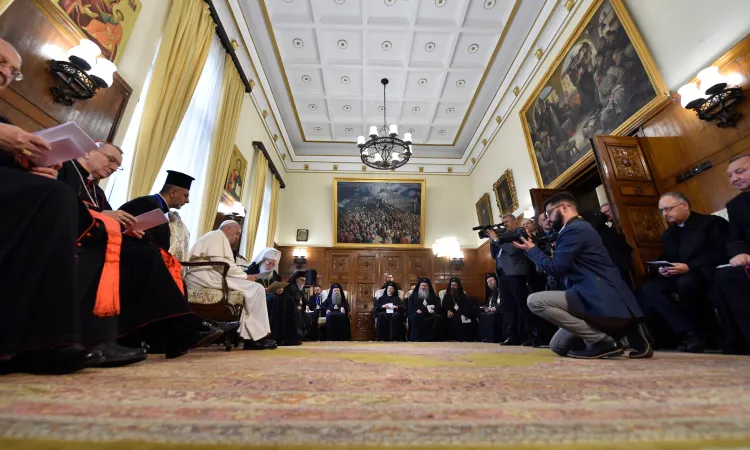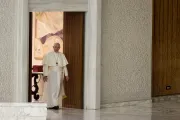Metropolitan Antonij then admonished: "The faithful of Christ have nothing to fear. Nobody can endanger our orthodox faith. Orthodox Christians do not see in their neighbors enemies and threats, but brothers and sons of God."
That of Metropolitan Antonij was the second pro-Pope Francis Orthodox intervention. Before him, Metropolitan Naum of Rousse published on his Facebook page a post titled "What threat is Francis to us."
Metropolitan Naum wrote: "We know that Pope Francis' visit goal is not that of turning Bulgarian into Roman Catholics." He added that the Holy Synod gave a majority vote to the meeting with Pope Francis because "it is good to realize that we need to know each other better, to enjoy of the goodwill between us. This is, in fact, Pope Francis' message. Because God is love."
These two posts show that even prominent members of the Holy Synod wish to dismiss the idea that the meeting with Catholics is a threat, as many Orthodox faithful think.
More in A Vatican Observer
Patriarch Neofit has the same approach.
In the end, the Bulgarian Orthodox showed their wish to open up.
Such an opening is difficult since some of the members of the Holy Synod are on apparently very extreme positions. However, the most extreme views are not fed with anti-Catholic prejudice, but they are somewhat committed to preserving their faith.
In addition to that, the Bulgarian Orthodox Church still feels some influence from Russia, and on the other hand, it needs to keep the national Church strong.
Even Orthodox faithful are traditionally suspicious in terms of relations with other Christian confessions.
Metropolitans Antonij and Baum actually reassured faithful with their posts that there was no proselytizing agenda in Pope Francis' trip.
On the other hand, the Bulgarian Orthodox Church had to be consistent with what it always preached, beyond this path of dialogue.
(Column continues below)
Subscribe to our daily newsletter
For these reasons, symbols are significant to understand Pope Francis' trip and the impact it had.
Patriarch Neofit gave Pope Francis a painting of Alexander Nevsky cathedral instead of an icon, which is traditionally presented in the religious meeting. This way, he emphasized the Pope's character of the head of State.
But in Alexander Nevsky Cathedral the Pope sat on chair displaced on a round carpet with the two-headed eagle that is used for Orthodox bishops. The eagle symbolizes that shepherds need to look from above, with the eye of God. For the prayer, Pope Francis was then considered as a bishop.
They seem nuances, but they are significant.
Pope Francis also made symbolic actions. Celebrating Mass on May 5 in Sofia, he wore the omophorion that Bulgarian Prime Minister Boyko Borissov donated to him.
The omophorion is a liturgical vestment used by Orthodox bishops and Eastern Catholic bishops of the Byzantine Rite, but also by those of Latin rite.



